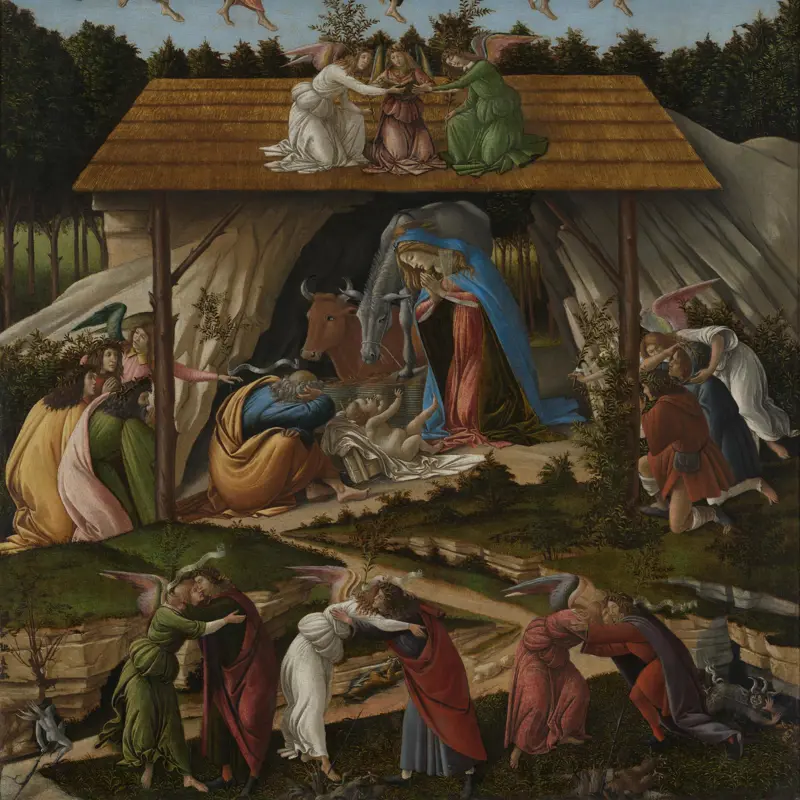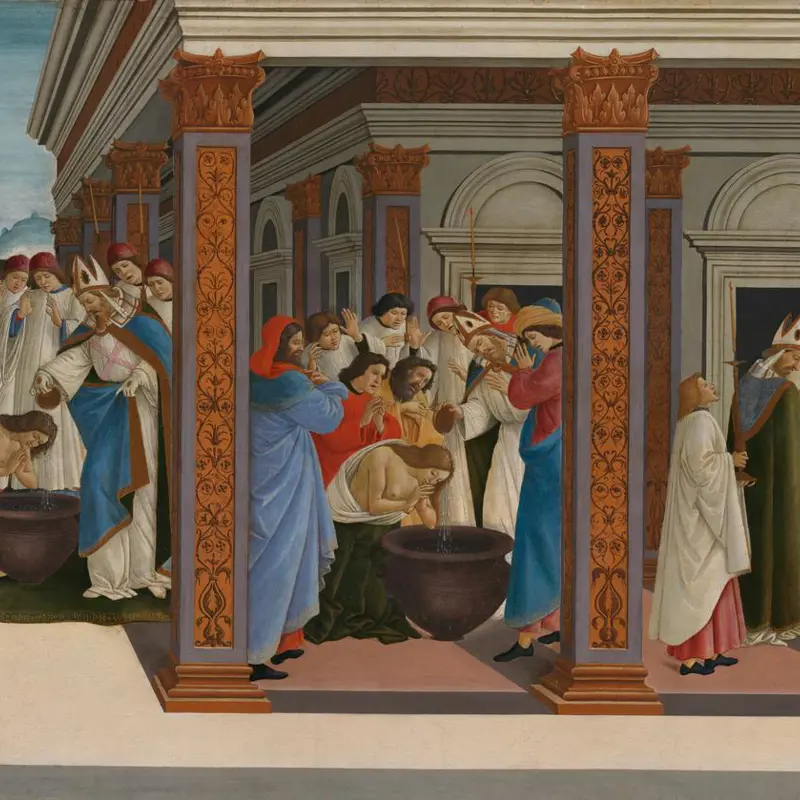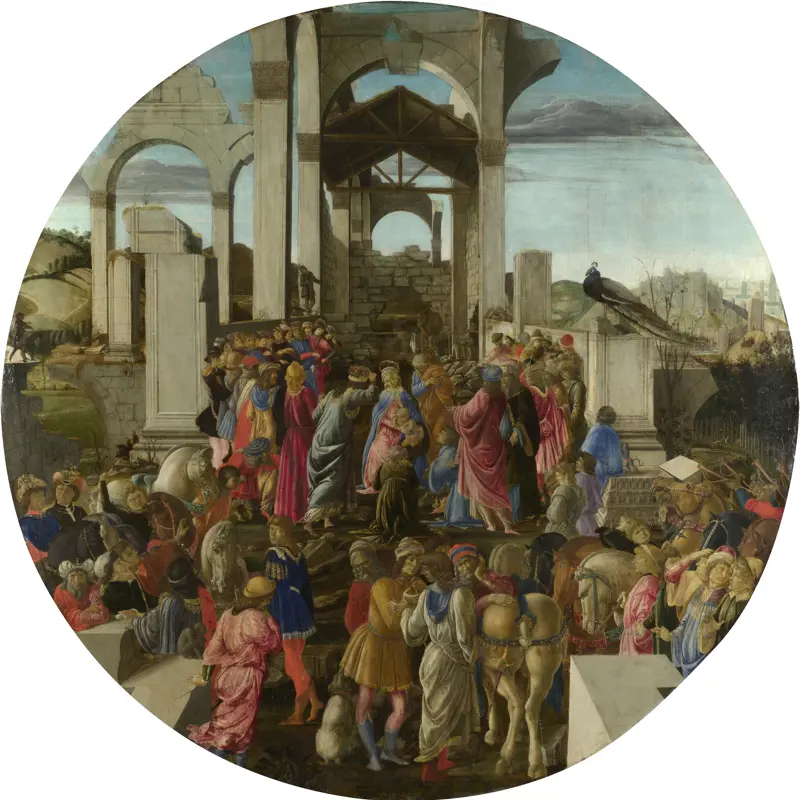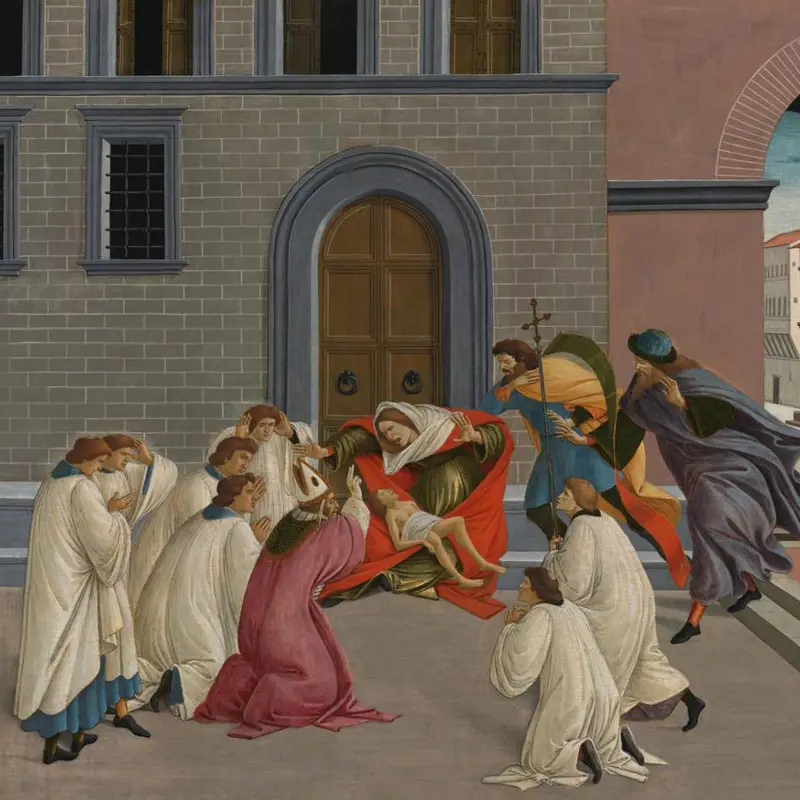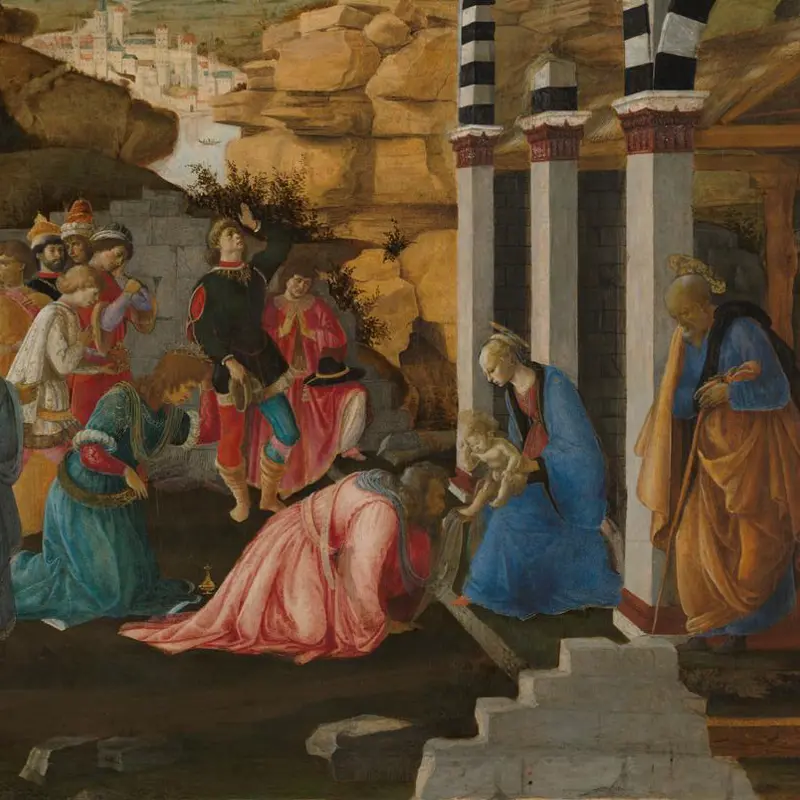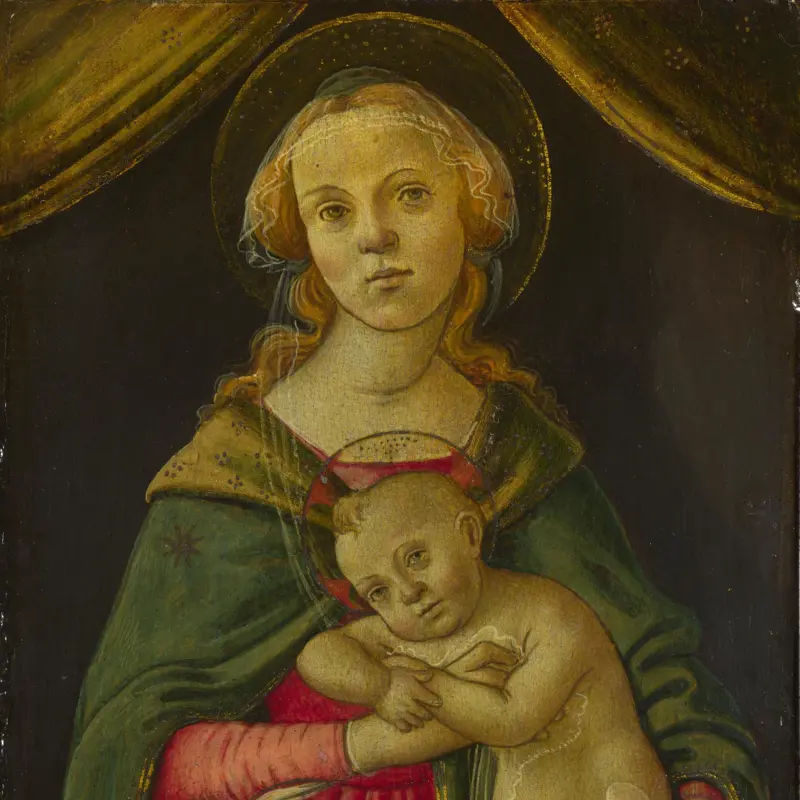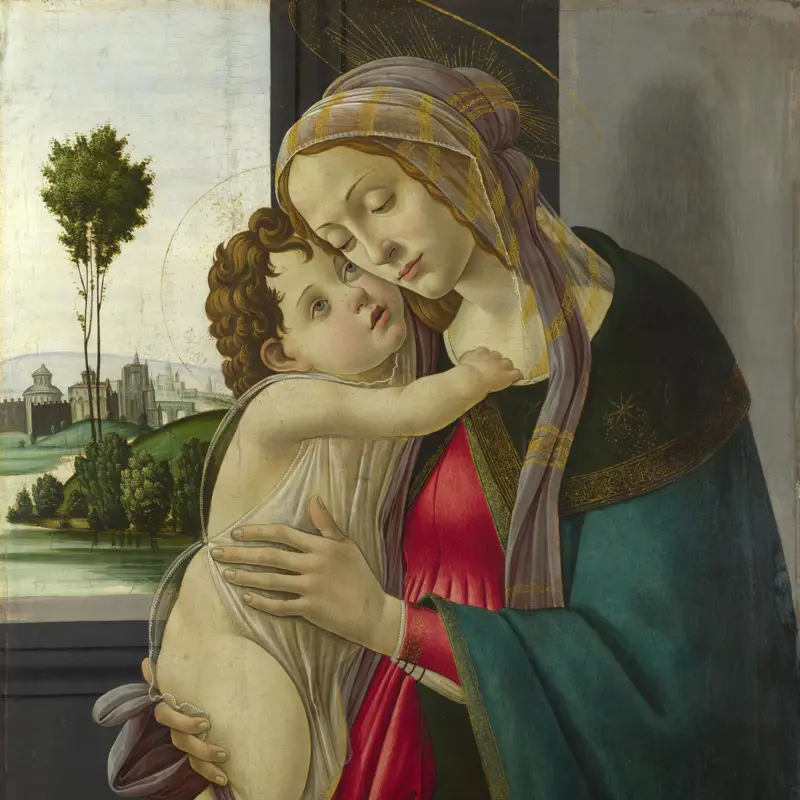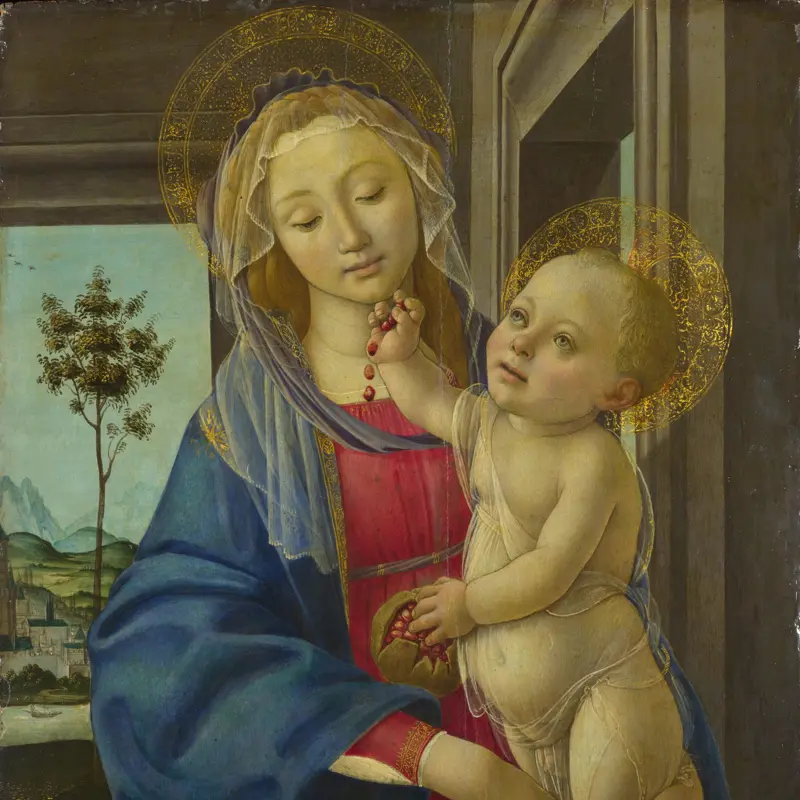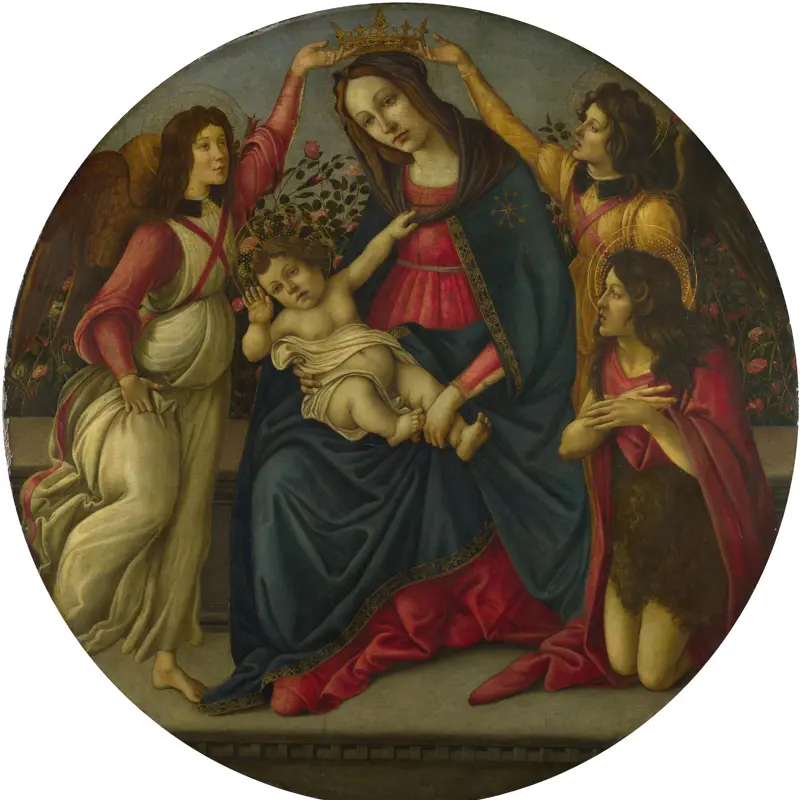Follower of Sandro Botticelli, 'A Lady in Profile', about 1490
About the work
Overview
Portraits like this – of idealised women, seen in profile – were popular in fifteenth-century Florence. This picture is not by Botticelli but by his workshop, which was one of many that produced them. The women usually have fair hair, pale skin and rosy lips, as this was thought to be the most beautiful colouring.
This belief was influenced by fourteenth-century poetic descriptions of beautiful – and virtuous – women. Since the face was seen as the mirror of the soul, such portraits also emphasised the character of their sitters.
Like many other portraits of the period, this one has a painted reverse. It shows a winged figure standing on a rocky mound. We don't know the meaning of the image, but it most probably symbolised the woman’s moral character.
Key facts
Details
- Full title
- A Lady in Profile
- Artist
- Follower of Sandro Botticelli
- Artist dates
- about 1445 - 1510
- Date made
- about 1490
- Medium and support
- egg tempera on wood
- Dimensions
- 59.1 × 40 cm
- Acquisition credit
- Bequeathed by the Misses Cohen as part of the John Samuel collection, 1906
- Inventory number
- NG2082
- Location
- Not on display
- Collection
- Main Collection
- Previous owners
Provenance
Additional information
Text extracted from the ‘Provenance’ section of the catalogue entry in Martin Davies, ‘National Gallery Catalogues: The Earlier Italian Schools’, London 1986; for further information, see the full catalogue entry.
Exhibition history
-
2009Titian’s Triumph of LoveThe National Gallery (London)21 July 2009 - 20 September 2009
Bibliography
-
1895Catalogue of Pictures by Italian Masters of the Fifteenth, Sixteenth, Seventeenth and Eighteenth Centuries, Collected by John Samuel, London 1895
-
1904E. Schaeffer, Das florentiner Bildnis, Munich 1904
-
1907E. Bertaux, 'Botticelli costumier', Revue de l'art, XXI, 1907, pp. 269-86, 375-92
-
1907M.H. Spielmann, 'The John Samuel Bequest to the National Gallery, I', The Connoisseur, XVII, 1907, pp. 229-34
-
1907M.H. Spielmann, 'The John Samuel Bequest to the National Gallery, I', Revue de l'art, XXI, 1907, pp. 161-76
-
1911H.T. Kroeber, Einzelporträts des Sandro Botticelli, Leipzig 1911
-
1923R. van Marle, The Development of the Italian Schools of Painting, 19 vols, The Hague 1923
-
1925Y. Yashiro, Sandro Botticelli, London 1925
-
1938B. Berenson, The Drawings of Florentine Painters, 2nd edn, Chicago 1938
-
1938J. Mesnil, Botticelli, Paris 1938
-
1951Davies, Martin, National Gallery Catalogues: The Earlier Italian Schools, London 1951
-
1958R. Salvini, Tutta la pittura del Botticelli, Milan 1958
-
1961M. Davies, The Earlier Italian Schools, 2nd edn, London 1961
-
1970G. Mandel, The Complete Paintings of Botticelli, London 1970
-
1978R. Lightbown, Sandro Botticelli, London 1978
-
1986Davies, Martin, National Gallery Catalogues: The Earlier Italian Schools, revised edn, London 1986
-
1989R. Lightbown, Sandro Botticelli: Life and Work, 2nd edn, London 1989
-
1990L. Campbell, Renaissance Portraits: European Portrait-Painting in the 14th, 15th and 16th Centuries, New Haven 1990
-
1990A. Dülberg, Privatporträts: Geschichte und Ikonologie einer Gattung im 15. und 16. Jahrhundert., Berlin 1990
-
1991J. Dunkerton et al., Giotto to Dürer: Early Renaissance Painting in the National Gallery, New Haven 1991
-
2001
C. Baker and T. Henry, The National Gallery: Complete Illustrated Catalogue, London 2001
About this record
If you know more about this work or have spotted an error, please contact us. Please note that exhibition histories are listed from 2009 onwards. Bibliographies may not be complete; more comprehensive information is available in the National Gallery Library.

